DO'S & DONT'S
WARNING GRAPHIC IMAGES
Water troughs can be deadly for wildlife!
A simple water trough, a source of life for some, can become a perilous trap for others.
Native animals, driven by thirst, often find their way to these man-made oases. But for the smaller creatures, what begins as a quest for a vital drink can end in tragedy. Once they slip into the water, the steep, slippery sides of the trough offer no escape, turning these watering holes into unintended death traps.
However, where there is a problem, the indomitable human spirit often finds a solution. By placing a sturdy, long stick or a robust rope into the trough, we create a lifeline, a bridge back to safety for these vulnerable beings. It’s a simple act, yet it speaks volumes of our capacity for kindness and stewardship over the creatures with whom we share our home.
A Sugar Glider’s Second Chance
In the quiet hush of an early morning on a rural property, a tiny survivor was discovered. A young Sugar Glider—barely the size of a human hand—was found clinging desperately to the rim of a cattle trough. Her fur was heavy with water, her small body shivering, and her once-bright eyes dulled by exhaustion. The trough, an everyday feature of farm life, had become a silent trap. Her mother and sibling had already been lost to the water’s depths, leaving her alone and vulnerable.
Yet fate intervened. A passer-by noticed her fragile form and lifted her gently to safety. From there, she was entrusted to trained wildlife carers, people who dedicate their lives to giving native animals a second chance.
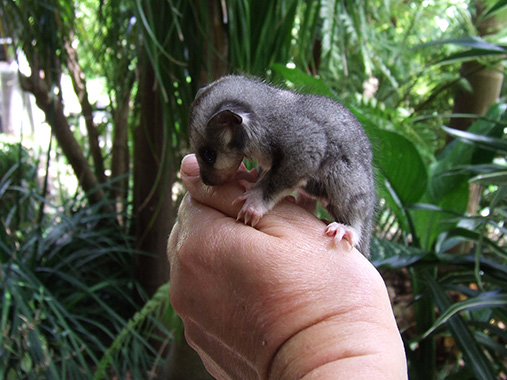
The Healing Journey
Under the care of her human guardians, the little glider was warmed, dried, and nourished with the special formula she needed to grow strong. Day by day, her strength returned. Her fur regained its silky sheen and her energy swelled as she began to glide from branch to branch in her enclosure, rehearsing the movements she would one day need to survive in the wild.
Caring for such a creature requires patience and deep understanding. Sugar Gliders are social, highly active, and nocturnal. They feed on nectar, sap, insects, and pollen, and they need the company of their kind to thrive. With the right care, this young glider’s natural instincts awoke again, preparing her for her eventual release.
Returning to the Wild
When the time came, she was released into a habitat rich with eucalypt blossoms and tree hollows—an environment where she could once again live as she was meant to. Her release was more than a farewell; it was a quiet celebration of resilience, a reminder that even the most fragile lives can be restored when compassion meets action.
What We Can Learn
This story is not only about the survival of a single Sugar Glider but also about the choices we make in our shared landscapes. Something as simple as covering or safely modifying water troughs and buckets can prevent tragedies like this.
- Farmers and landholders can install escape ramps or floating sticks in troughs, giving small animals a way out.
- Gardeners and households can ensure pools, ponds, and water containers are wildlife-friendly.
- Communities can support local wildlife rescue organisations, whose work is essential to giving animals like this glider a second chance.
A Gentle Call to Action
The Sugar Glider’s story is a testament to the incredible resilience of Australia’s wildlife, but also to the role humans play in their survival. By making small, thoughtful changes to the way we manage our environments, we can reduce risks and help protect native species.
Every act of care, no matter how simple, can ripple outwards—ensuring that the night skies remain alive with the graceful glides of these remarkable little marsupials.
🌿 Check Before You Spray! 🌿
Protect our native wildlife in your backyard
🦉 Why it matters
- Trees are homes for possums, gliders, birds, and insects.
- Sprays for pests or fertilisers can cause blindness, burns, and death to hidden wildlife.
- A quick look before spraying could save a life.
What you can do
Look first – Check branches, hollows, and foliage for resting animals.
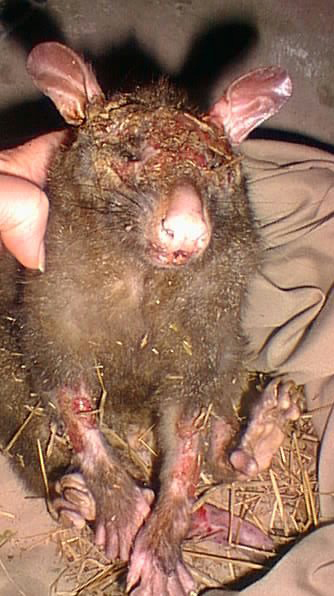
Choose natural methods – Use wildlife-friendly pest control options
Protect hollows – Cover nesting hollows if spraying nearby.
Share the message – Help neighbours and community groups protect local wildlife.
💚 A simple act of care
Every tree is a sanctuary.
Every spray is a choice.
Together, we can keep our gardens safe for all creatures who call them home.
🍃 Before you spray, pause and look up! 🍃
👉 You might just find a possum, glider, or owl looking back at you.
Swimming Pool Fencing: A Hidden Threat to Wildlife
Swimming pools shimmer like blue jewels in the Australian landscape—symbols of leisure, safety, and family joy. For humans, fences that surround these pools are essential, protecting children from accidental drownings. Yet for the creatures that share our backyards, these fences can become silent traps, costing lives that should never have been lost.
A Tragic Encounter
One morning in Byron Bay, a Swamp Wallaby—a shy, gentle browser of forests and heathlands—met with an agonising fate. She was a mother, her joey nestled in the warmth of her pouch, when instinct urged her to flee from some unseen disturbance. In her desperate flight, she became ensnared in the vertical bars of a pool fence.
Her powerful hind legs, usually a symbol of grace and survival, became her undoing as she struggled against the steel. Within an hour, exhausted and injured, her fight ended. The joey, in mum’s struggle to flee, was torn from safety and left injured and vulnerable.
This tragedy is not an isolated story. Wallabies, kangaroos, echidnas, and even reptiles find themselves at odds with human structures. Where we see barriers of safety, wildlife encounters obstacles they cannot comprehend.
Wildlife-Friendly Pool Fencing
Protecting Children and Saving Wildlife
Swimming pool fences are essential for child safety, but they don’t always consider the needs of our native animals. Each year, wallabies, kangaroos, echidnas, lizards, and even birds become injured or die after becoming trapped in or around pool fences. With a little thought, however, it is possible to design or adapt fencing that keeps children safe and protects wildlife.
Understanding the Risks
| Fence Feature | Wildlife Hazard | Examples of At-Risk Species |
|---|---|---|
| Vertical metal bars with narrow gaps | Animals attempt to squeeze through and get stuck | Wallabies, kangaroos |
| Glass pool fencing | Nearly invisible, leading to collisions | Birds, gliders |
| Solid fences with no escape routes | Animals become trapped inside pool area | Lizards, echidnas |
| Sharp edges / gaps at ground level | Entrapment or injury | Small mammals, reptiles |
Making Fences Visible
- Reflective strips or decals: Especially important for glass fences, which can be invisible to flying birds.
- Coloured panels or frosted sections: Break up clear surfaces so animals recognise the barrier.
Escape and Deterrent Features
- Wildlife ramps inside pools: If an animal falls in, a simple ramp of roughened material allows them to climb out.
- Barrier planting: Dense shrubs around vertical metal bar fences discourage wallabies and kangaroos from approaching. Native species such as Lomandra or Callistemon work well.
Retrofitting Existing Fences
If you already have a pool fence, you can make small changes:
- Install wildlife escape ramps or floating devices inside the pool.
- Plant natives outside vertical-bar fences ( check with local state laws for distance allowed) to prevent wallabies becoming trapped.
- Mark glass fences with decals or frosted film to reduce bird strikes.
- Check your pool daily—especially at dawn and dusk when wildlife is most active.
Balancing Safety and Conservation
Australian law requires pool fencing to meet strict child-safety standards. Any modifications should always comply with your state’s building regulations. The key is to find solutions that add to safety rather than compromise it.
By making small, thoughtful adjustments, pool owners can create backyards that are safe for children and respectful of the rich wildlife that surrounds us.
A Shared Future
The story of the swamp wallaby mother reminds us that a fence is not just a human boundary—it is a barrier in a living landscape. Each choice we make can mean the difference between life and death for the animals that share our world.
Through wildlife-friendly design, we can turn backyards from hidden hazards into safe havens.
Think Before You Chop and Cut
In the quiet rhythm of suburban life, the garden often becomes a stage where human hands shape and trim the greenery around them. Yet, among the hum of chainsaws and the snip of secateurs, there is another story unfolding—one that belongs to the hidden residents of our backyards.
The Silent Neighbours in the Trees
Take the Coco’s Palm, for example. Once popular in suburban gardens, it now poses a double dilemma. Its unripe fruits are highly toxic to Flying Foxes—Australia’s remarkable night gardeners that pollinate and disperse seeds as they glide through the dusk. For many, removing this palm seems an act of responsibility.
But nature is layered. Within its dense fronds, a family of Ringtail Possums may have built a drey—a small, woven nest of twigs, leaves, and bark. To the possums, this is not just shelter; it is a nursery, a place of safety.
Or as in the picture, a Brushtail possum is calling this palm home.
When cut down without care, these quiet homes can be destroyed in an instant. Possums, when frightened, often freeze rather than flee, a survival instinct that tragically makes them even more vulnerable during tree removal.
The result, as too often happens, is heartbreaking!!!
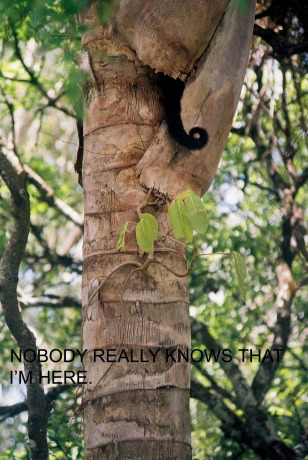
A Reminder to Pause
Every tree and shrub in our gardens may hold secrets. A hollow branch could shelter a sleeping Brushtail Possum. A thick shrub might cradle a nest of tiny birds. Even a pile of fallen leaves could be the refuge of lizards or insects. These creatures are not just visitors—they are part of the living system that makes our backyards richer and more alive.
How We Can Help
Before pruning or cutting, a simple pause can make all the difference.
- Inspect first – Look closely for nests, dreys, or hollows.
- Time your work – Avoid heavy pruning in spring and summer when many species are breeding.
- Seek advice – Wildlife rescue organisations and arborists trained in habitat protection can provide guidance.
- Choose wisely – When planting, consider native trees and shrubs that provide food and shelter for local wildlife.
A Shared Responsibility
Our gardens are more than personal spaces—they are part of a larger landscape that sustains life. By being mindful, we safeguard not only the visible beauty of flowers and foliage but also the unseen lives that depend on them.
Each careful choice we make—whether it is to inspect before cutting, plant a native tree, or simply let a hedge grow a little wilder—creates a safer world for our wild neighbours.
To think before we chop and cut is to acknowledge that we share our suburbs with an extraordinary variety of wildlife. It is to recognise that behind every leaf, branch, and hollow there may be a story of survival unfolding. By tending our gardens with compassion, we don’t just shape the landscape—we nurture the living web of life that entwines us all.
The Young Female’s Struggle
Among the family was a young female. Suddenly displaced, she found herself in unfamiliar territory. Possums are fiercely territorial — each one knows its patch of trees, its feeding spots, and its safe hollows. To be thrust into another’s domain is not an opportunity, but a battle.
The young female soon bore the scars of these conflicts.
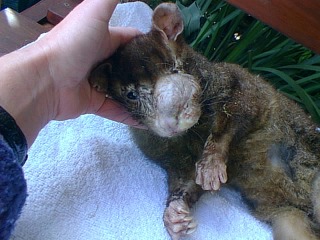
Her face grew swollen with infection, her body thinned from hunger, and her once-healthy fur became ragged. Her front teeth were gone, leaving her unable to feed properly. Her story was one of resilience, but also of suffering.
When she was finally discovered, the only kindness left was a merciful release from her pain.
The Hard Truth About Relocation
This story highlights a truth often overlooked: relocating a possum is not as simple as taking it from a roof and placing it in a forest.
- Territorial Conflicts: Brushtail Possums defend their territories with aggression. A newcomer is rarely welcomed.
- Loss of Familiarity: They know where to find food and shelter in their home range. In a new place, this knowledge is lost.
- Stress and Vulnerability: Displaced possums face hunger, injury, and high stress, all of which reduce their chance of survival.
A Better Way Forward
If a possum must be removed, it is vital to give it the best chance to survive. This can be done by:
- Providing a Possum Box: Installing a nest box in a suitable tree near its original territory gives the animal a safe alternative home.
- Sealing Access Points Only After Relocation: Ensuring the roof or cavity is blocked only once the possum has left the roof cavity, and has access to a secure alternative.
- Seeking Expert Guidance: Local Wildlife carers can usually provide advice on humane solutions.
A Call for Compassion
The young female’s story is a sobering reminder that our actions ripple through the lives of the creatures we share our world with. Brushtail Possums are not pests — they are remarkable marsupials, survivors of Australia’s shifting landscapes, and guardians of our night skies.
When we encounter them in our homes, let us act with patience and compassion. By seeking advice, installing possum boxes, and respecting their needs, we can ensure these creatures not only survive, but thrive.
Her story, though tragic, becomes a lesson: coexistence is not just possible, it is essential.
What is your dog or cat up to right now ?
Right now, your dog might be curled up at your feet, peacefully dreaming of adventures, or perhaps nosing about the backyard, tail wagging as it explores familiar scents. But beyond these everyday moments of warmth and joy lies a bigger question — what role does your dog play in the lives of the creatures who share our gardens, parks, and bushland?
Let me share a story that reveals why that question matters.
A Survivor in the Backyard
In the quiet shade of an Australian backyard, a Blue-tongue Lizard found itself face-to-face with a powerful predator it had never evolved to withstand: a domestic dog. With a sudden rush and a snap, the encounter left the lizard gravely injured — its body torn, its spine damaged, and yet its spirit remarkably unbroken.
Even in this state, the lizard struggled forward, dragging itself across the ground with determination that seemed almost unearthly. It was a heartbreaking sight, a reminder that in every corner of our landscapes, native wildlife carries stories of survival that often go unseen until tragedy intervenes.
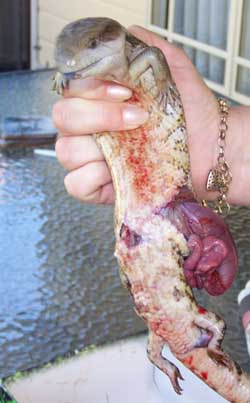
Compassion in the Midst of Pain
Thankfully, this lizard was discovered and taken into care. But despite its strength of will, the scale of its injuries meant that kindness came in the form of release from pain. Through humane euthanasia, its suffering was eased, and its story was transformed into something greater than tragedy — it became a lesson.
What This Teaches Us
This small backyard encounter highlights an important truth:
- Domestic pets and native wildlife do not naturally co-exist. Dogs and cats, driven by instinct or curiosity, can cause devastating injuries to species that have no defences against them.
- Responsible pet ownership matters. Supervision, secure fencing, and mindful habits — like keeping cats indoors or dogs leashed when outdoors — save countless native lives each year.
- Every choice counts. By keeping an eye on what our pets are “up to,” we directly shape the safety and survival of the wildlife around us.
A Call to Guardianship
When we ask, “What is your dog up to right now?” it becomes more than a simple reflection on companionship. It’s also an invitation to see our homes and backyards through the eyes of the creatures who wander there — lizards soaking in the sun, possums stretching through branches, and birds perched on fences.
Your dog may simply be resting in the afternoon warmth, ears flicking at the sound of crickets. But with just a little mindfulness, you ensure that the lizard in the garden, the bird nesting nearby, and the frog calling at dusk also have the chance to live safely in the same space.
Our pets fill our homes with love and laughter, but we must remember they live alongside a silent community of wild neighbours. To care for one does not mean to overlook the other. With awareness and gentle action, we can create homes where paws, feathers, scales, and human footsteps can coexist in harmony.
So—what is your dog up to right now? Perhaps the more important question is: what can you do right now to safeguard the other lives sharing your backyard?
A Practical Checklist for Pet Owners: Protecting Australian Wildlife
Here’s a practical and easy-to-follow checklist you can use to make your home a sanctuary for both your pets and the wildlife around you.
🐕 For Dog Owners
Supervise outdoor time
Always keep an eye on your dog when it’s outside, especially near bushland or garden areas where lizards, frogs, and birds may be active.Leash walks in natural areas
When walking your dog through reserves, trails, or areas with dense vegetation, use a leash to prevent chasing or harming wildlife.Create a secure backyard
If possible, fence off sections of your yard where wildlife is known to move through — for example, near rockeries or garden beds that reptiles may use.Minimise digging
Train your dog away from digging in garden beds where reptiles or frogs may shelter underground.Redirect curiosity
Provide enrichment, toys, and play so that your dog stays engaged, reducing its drive to hunt or investigate wildlife.
🐈 For Cat Owners
Keep cats indoors or provide outdoor cat enclosures
This is one of the single most effective ways to save native wildlife. Cats are skilled hunters, even if they are well-fed, and they can kill birds, reptiles, and small mammals silently.Night-time precaution
Native species such as frogs, geckos, and nocturnal mammals are most active at night when cats also like to roam. Keeping cats indoors overnight is crucial.Safe enrichment
Provide climbing posts, window perches, and interactive toys indoors to satisfy their hunting instincts in a safe way.
🌿 Creating a Shared Environment
Wildlife-friendly water bowls
Provide safe, shallow water sources in your garden for birds and lizards, but place them in spots that your pet cannot easily access. Remember to refresh daily.Shelter space
Retain natural habitat features such as logs, rocks, and native plants — but create zones your pets cannot reach. This gives wildlife somewhere to hide and recover if startled.Creating Safe Hideaways for Lizards in Your Backyard
One of the simplest and most effective ways to give them a fighting chance is to create safe, hidden spaces they can retreat to quickly.
Here’s a step-by-step guide to building a simple, wildlife-friendly refuge using something as humble as a piece of downpipe.
🦎 Why Provide Hiding Places?
- Protection: Lizards rely on speed and shelter rather than aggression to escape threats.
- Comfort: Cool, covered areas protect them from extreme heat and predators alike.
- Habitat support: Even a few small shelters in a backyard can make a big difference, allowing lizards safe passage through urban areas.
🔨 How to Build a Lizard Refuge with Downpipe
Materials Needed:
- 1 or 2 small sections of PVC downpipe (about 20–60 cm long, diameter 10–15 cm)
- Leaf litter or mulch
- Native groundcover plants or small shrubs (optional, but ideal)
Steps:
Choose a quiet spot
- Look for areas against fences, under shrubs, or close to garden beds where lizards are likely to travel.
- Ensure the spot is safe from your dog or cat’s access where possible.
Lay the downpipe
- Place the pipe section flat on the soil.
- Position it so both ends are open, allowing the lizard to dart in and out easily.
Cover and blend
- Gently scatter leaf litter, mulch, or bark chips over and around the pipe.
- This camouflages the shelter, keeps it cool, and makes it appear more natural.
Add nearby cover
- Plant small shrubs, tufts of native grasses, or place a few logs and rocks nearby.
- This increases the sense of security and provides basking areas close to the refuge.
Leave it undisturbed
- Resist the temptation to check inside or move the pipe. Lizards feel safest when their shelters remain untouched.
🌿 Extra Tips for Lizard Safety
- Multiple refuges: Place several pipes in different parts of the garden to provide options and escape routes.
- Safe corridors: If your yard borders bushland or a green corridor, make sure there are “stepping stone” hides that lizards can use to move safely.
- Water access: A shallow, pet-proof dish of water nearby can help, especially during dry months.
🌏 Conservation Reminder
This small act of kindness helps lizards coexist with us in increasingly urbanised landscapes. By offering just a few quiet hiding spots, you reduce the risk they face from predators and give them the opportunity to continue their quiet, vital role in the ecosystem — controlling insects, spreading seeds, and enriching the natural balance of your backyard.
Supervise encounters
If you spot wildlife in your yard (such as a lizard basking on the path), bring your pets inside until the animal has moved on safely.
🧰 Emergency Preparedness
Know wildlife rescue contacts
Keep the phone number of your local wildlife rescue organisation (such as WIRES, Wildlife Victoria, Wildlife Rescue Queensland, or a regional group) handy.Safe handling
If your dog or cat injures wildlife, avoid trying to treat the animal yourself. Place it gently in a ventilated box with a cloth on the bottom, or cloth bag and take it to a vet or contact a licensed wildlife organisation.Check your pet’s vaccinations
Healthy pets are less likely to transmit diseases to wildlife if accidental contact occurs.
🌏 The Bigger Picture
Every small action adds up. By supervising play, managing roaming, and creating safe zones for wildlife, you protect not just one lizard or bird, but the entire community of species that call your neighbourhood home.
✅ Quick Summary Checklist
| Action | Dogs | Cats |
|---|---|---|
| Supervise outdoors | ✔️ | ✔️ |
| Keep indoors at night | Recommended | Essential |
| Secure fencing/enclosures | ✔️ | ✔️ |
| Provide enrichment toys | ✔️ | ✔️ |
| Protect water & shelter areas | ✔️ | ✔️ |
| Know wildlife rescue contacts | ✔️ | ✔️ |
The sight of a wagging tail or a gentle purr brings joy to our lives every day. By caring for our pets in thoughtful ways, we can extend that same kindness to the hidden lives in our gardens. In doing so, we become true guardians of both our companions and the wild heart of Australia.
Please Check Before Putting the Lid Back on the Bin
In the soft glow of the streetlights, a Brushtail Possum wandered the suburban night, his sharp eyes gleaming with a simple quest: a meal. The scent of discarded scraps drifted through the air, guiding him to the slightly open lid of a waste bin. With the nimble ease of his kind, he slipped inside, unaware that this search for food could become his silent trap.
At dawn, when the lid was returned without a glance inside, his fate was quietly sealed. The world above him stirred to life — the chatter of birds, the hum of traffic, and the steady arc of the sun across the sky. Yet within the confines of the bin, the possum waited in stillness, cut off from the rhythms of the day.
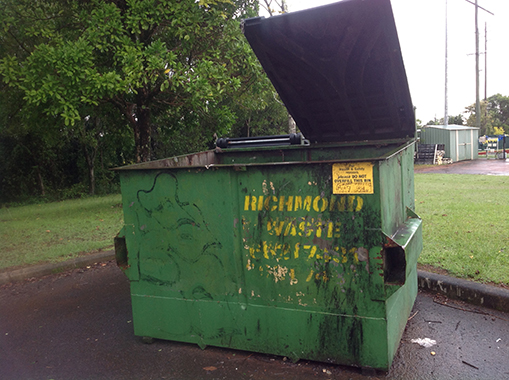
Night returned with its star-strewn cloak, but no escape came. Another day passed, while the little life inside pressed against the patience of hope.
It was only when the bin was opened once more that his presence was discovered. By then, the thread of life was already fraying. Though fresh air rushed in and hands offered care, it was too late. His journey ended not in the hollow of a gum tree, but in the shadow of a human-made container.
A Gentle Reminder
This quiet story carries an important truth: our urban landscapes are not ours alone. They are shared with possums, birds, lizards, insects, and so many others, who navigate the city in ways we rarely see.
Before closing a bin lid, take a moment. Peer inside. Pause and listen for just a breath. That small act of awareness may save a life.
Each creature — whether curled in a tree hollow or nestled in the recess of a bin — holds a place in the grand tapestry of life. To respect and protect them is to honour the wildness that still threads through our human spaces.
✨ Why this matters: Urban wildlife like Brushtail Possums often explore bins for food. When lids close, they become trapped and perish from stress or lack of air. A simple check can prevent unnecessary tragedy — a gentle act with profound impact.
Is Your Dog Secure at Night?
Not long ago, a Short-eared Possum found itself face to face with a dog exploring the night. To the dog, it may have been curiosity, play, or instinct; but for the possum, it was a fight for survival.
The little marsupial escaped, though not without deep wounds and trauma. Its fur was torn, its body marked by fear and pain – the silent cost of a single night’s encounter. Through patient care, the possum healed, and after 13 days it returned to its home range. But many others are not so fortunate. Countless lives are lost unseen, their absence quietly felt in the delicate fabric of the bush.
Why Domestic Dogs Pose a Threat at Night
Even the gentlest and most well-fed dogs carry instincts that awaken under the cover of darkness. At night:
- Curiosity turns into pursuit – a rustle in the grass can spark the thrill of a chase.
- Small marsupials and reptiles are defenceless – animals unprepared for dogs’ size and strength stand little chance.
- Injury carries wider impacts – a mother possum injured at night may leave dependent young to struggle alone.
For wildlife, a dog’s casual adventure can mean the end of a lineage that stretches back millennia.
A Simple Act of Protection
The good news is that there is something every dog owner can do. By making sure your dog is secure from dusk until dawn, you protect both your pet and Australia’s native wildlife. This can be as simple as:
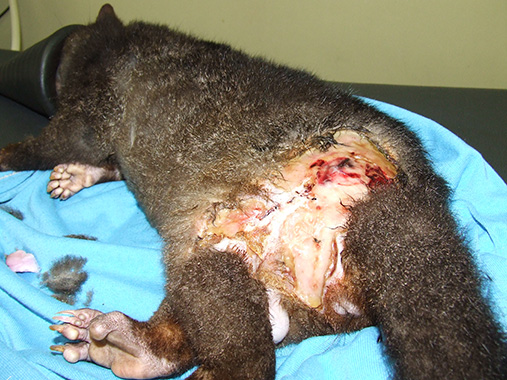
Possum at the vet being treatet under anesthesia.
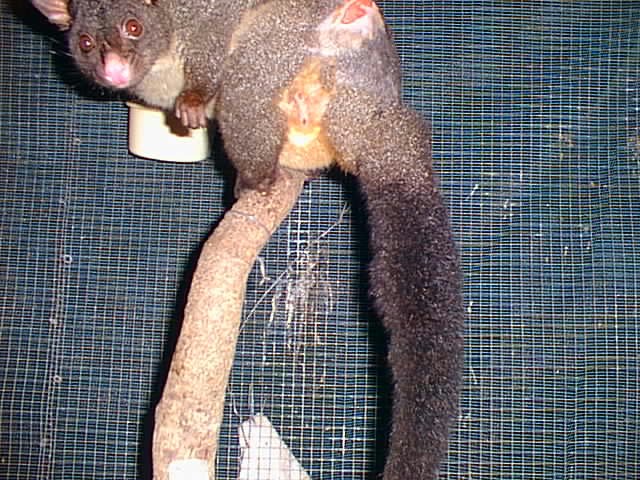
Possum seen here In recovery.
- Keeping dogs indoors at night – where they are warm, safe, and out of harm’s way.
- Checking fences and enclosures – ensuring there are no escape points.
- Supervising late-night outings – keeping night walks controlled and leashed.
Small Actions, Big Impact
Each secure dog means one less threat to nocturnal creatures – from possums and gliders to bandicoots, frogs, and ground-nesting birds. Your pet remains safe from injury and misadventure, while our native wildlife continues to thrive in its rightful place.
A Question Worth Asking Every Night:
Is my dog secure tonight? With that one mindful step, you don’t just care for your companion – you become a guardian of Australia’s wild heart.
